Water hyacinth and rattan are two types of plants that have many similarities and differences. Both are sources of raw materials for handicrafts, but they also have their own advantages and disadvantages.
In this article, we will compare and contrast the characteristics of water hyacinth vs rattan, as well as their applications and impacts on the environment and society.
Contents [hide]
1. Comparison: Water Hyacinth vs Rattan
Water hyacinth and rattan are considered as “wicker” and are the traditional natural materials for weaving.
They are two distinct natural materials, each with its own set of characteristics that make them suitable for different purposes.
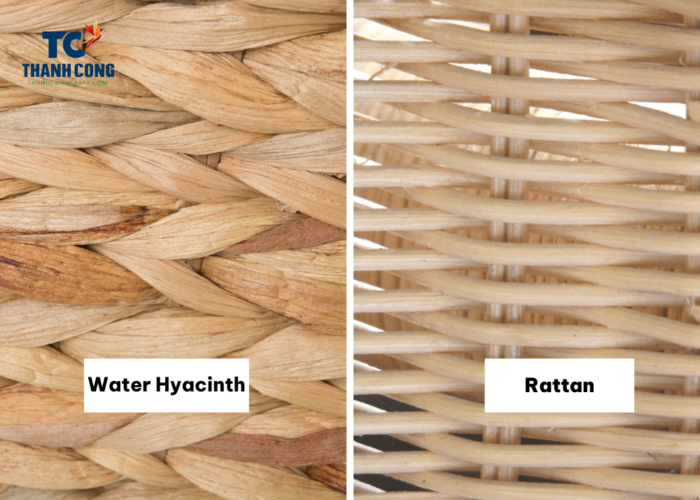
1.1 The Similarities
Both water hyacinth and rattan are natural material in origin, contribute to sustainable practices.
Water Hyacinth, despite its potential invasiveness, gains environmental value through controlled utilization in crafts. Similarly, Rattan allows for sustainable harvesting, aligning with eco-friendly principles.
The craftsmanship of both Water Hyacinth and Rattan involves intricate handwoven techniques, showcasing the artisanal skills involved in creating baskets, furniture, and various decor items. Their versatility is evident, with Water Hyacinth adapting well to both indoor and covered outdoor applications, while Rattan’s flexibility extends from indoor furniture to durable outdoor settings.
Aesthetic appeal plays a common role in their popularity. Water Hyacinth brings a soft and natural look, enhancing the visual appeal of products, while Rattan, with its natural gloss and rigid texture, contributes to aesthetically pleasing finishes in diverse designs.
Lastly, both Water Hyacinth and Rattan find extensive use in furniture. Water Hyacinth is often employed for crafting indoor furniture like chairs and sofas, while Rattan’s strength and durability make it a preferred choice for various furniture pieces, including those designed for outdoor use.
1.2 The Differenes between Water Hyacinth and Rattan
Water hyacinth and rattan are two types of plants that are often used for making furniture, baskets, and other products. However, they have some significant differences in their characteristics, origins, and environmental impacts.
Water hyacinth and rattan are two distinct natural materials often used in crafting various products. Understanding the differences between water hyacinth and rattan can help in choosing the right material for specific purposes.
Source and Growth:
- Water Hyacinth: It is a floating aquatic plant known for its rapid growth in water bodies. The plant forms dense mats on the surface of the water.
- Rattan: Rattan comes from the climbing palm species and grows in tropical regions, primarily in Southeast Asia. It is a type of vine that needs support to grow.
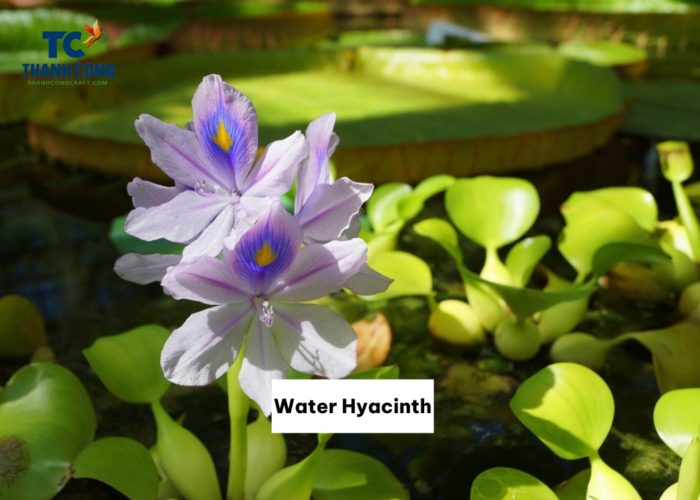
Composition:
- Water Hyacinth: It is a fibrous plant with broad leaves that are often dried and woven to create various products.
- Rattan: Rattan is a type of palm, and its stems are used for furniture making. The outer skin is peeled away, leaving the durable inner core for weaving.
Texture and Appearance:
- Water Hyacinth: Typically has a softer texture and a lighter appearance, making it suitable for furniture, baskets, and home decor items.
- Rattan: Rattan has a more rigid texture and a natural glossy finish. It is commonly used in making furniture, baskets, and various woven items.
Durability:
- Water Hyacinth: While water hyacinth is durable, it may not be as robust as rattan. It is more suitable for indoor use or covered outdoor spaces.
- Rattan: Known for its strength and durability, rattan is often used in outdoor furniture. It can withstand various weather conditions.
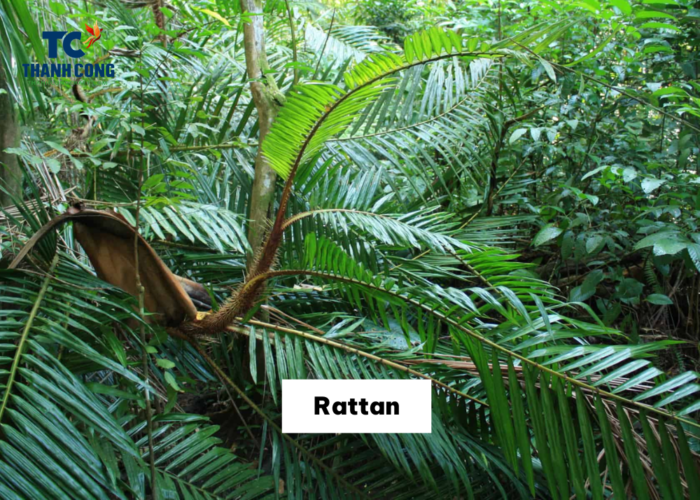
Environmental Impact:
- Water Hyacinth: Considered an invasive species in some regions, its use in crafts can help control its growth and contribute to environmental sustainability.
- Rattan: Harvesting rattan can be done sustainably, making it an eco-friendly choice. It also supports local economies in rattan-producing regions.
Applications:
- Water Hyacinth: Commonly used for crafting indoor furniture, home decor items, and baskets.
- Rattan: Widely used in furniture making, baskets, and other woven products. Its versatility extends to various design styles.
In conclusion, both water hyacinth and rattan have unique characteristics that make them suitable for different applications. Choosing between them depends on the specific requirements, aesthetics, and environmental considerations for the intended use.
2. Which One Should You Choose for Your Home Appliance?
When selecting materials for your home appliances, the choice between Water Hyacinth and Rattan holds key considerations for achieving the desired blend of aesthetics, durability, and functionality.
In terms of aesthetic appeal, Water Hyacinth offers a softer, hyacinth storage basket more natural look that creates a relaxed ambiance, making it particularly suitable for indoor settings. On the other hand, Rattan presents a structured and sophisticated appearance with a natural gloss, making it a versatile choice for both indoor and outdoor applications, adding a timeless and classic touch to the surroundings.
Durability plays a crucial role in the decision-making process. While Water Hyacinth is durable, it is best suited for indoor use or covered outdoor spaces, rattan table, requiring regular care and protection from excess moisture. In contrast, Rattan is known for its strength and resilience, making it an excellent choice for various applications, including both indoor and outdoor settings, with relatively easy maintenance.
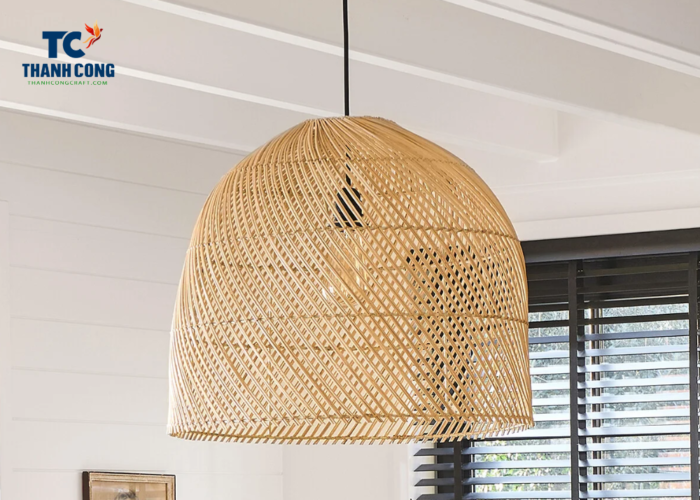
Versatility is another aspect to consider. Water Hyacinth is adaptable for crafting indoor furniture, baskets, and decor items, bringing a softer appearance that contributes to a cozy atmosphere. Meanwhile, Rattan is highly versatile, suitable for a broad range of applications, from indoor furniture to patio sets, thanks to its rigid texture and natural gloss that contribute to a sophisticated look.
Environmental considerations also come into play. Utilizing Water Hyacinth in crafts helps control its invasive growth, contributing to environmental sustainability. Similarly, harvesting Rattan can be done sustainably, aligning with eco-friendly practices.
Budget considerations may influence the decision, with Water Hyacinth generally being more budget-friendly compared to Rattan. However, the prices of Rattan products can vary depending on the specific piece and craftsmanship.
3. Thanhcongcraft’s Product Introduction
Thanhcongcraft specializes in crafting handmade products using Water Hyacinth and Rattan. The company is renowned for its unwavering commitment to quality craftsmanship, offering a diverse and meticulously crafted range of items. Thanhcongcraft takes pride in creating well-made products from Water Hyacinth and Rattan that are not only durable but also aesthetically pleasing.
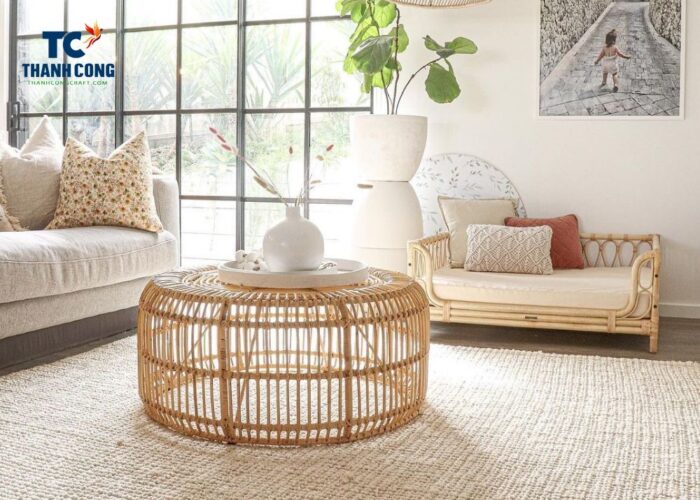
With years of experience and continuous development, Thanhcongcraft has firmly established itself in the market. The Water Hyacinth and Rattan collection is a testament to the company’s dedication, featuring beautiful, unique, and high-quality products that cater to a variety of preferences.
Thanhcongcraft distinguishes itself by using entirely natural materials and employing meticulous processing techniques, all of which are offered at the most affordable prices.
4. Conclusion
In conclusion, the decision between Water Hyacinth and Rattan depends on individual preferences, lifestyle, and the specific aesthetic goals for your living space. Whether prioritizing the softer, natural appeal of Water Hyacinth or the durability and versatility of rattan, careful consideration of these factors will help you make an informed choice for your home appliances.
If you have any further questions about water hyacinth vs rattan or want to buy products from us, don’t hesitate to send thanhcongcraft an email us at info@thanhcongcraft.com or message us at WhatsApp: +84967485411. Best regard!


